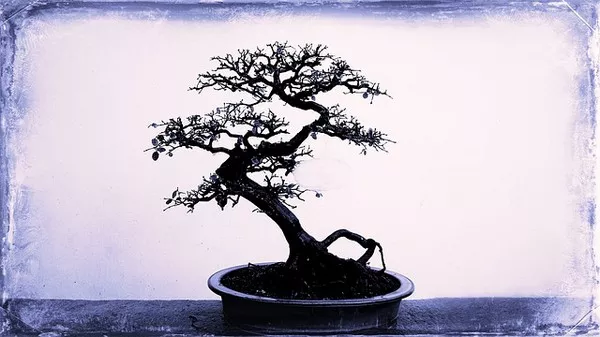Bonsai, the ancient Japanese art of cultivating miniature trees, has captured the imagination of enthusiasts worldwide for centuries. The allure of creating a living work of art from a tiny tree has led many to wonder: Can any tree be transformed into a bonsai? This question lies at the heart of the intricate and delicate balance between horticulture and artistic expression that defines bonsai cultivation.
The Essence of Bonsai: A Blend of Nature and Art
Bonsai, derived from the Japanese words “bon” (tray) and “sai” (planting), encapsulates the essence of nature distilled into miniature form. Originating in China over a thousand years ago, bonsai migrated to Japan, where it evolved into a highly respected art form, reflecting harmony, balance, and the passage of time.
At its core, bonsai is about capturing the essence of a tree in a small, confined space, evoking a sense of age, majesty, and natural beauty. It involves meticulous pruning, shaping, and cultivation techniques, all aimed at mimicking the appearance of mature, full-sized trees in miniature form.
The Diversity of Bonsai Trees
Contrary to popular belief, not all trees are suitable for bonsai cultivation. However, the range of tree species that can be transformed into bonsai is surprisingly vast. While traditional choices like junipers, pines, maples, and ficus are commonly used, virtually any woody plant with small leaves and branches can be considered for bonsai.
1. Selecting the Right Tree: Understanding Species and Characteristics
Choosing the right tree is essential to successful bonsai cultivation. Each species has its own unique characteristics and requirements, influencing its suitability for bonsai training. Factors to consider include:
2. Size: Bonsai trees should exhibit a balanced proportion between the trunk, branches, and foliage, regardless of their diminutive size. Selecting a tree species that naturally grows small leaves and has a compact growth habit is paramount.
3. Woody Characteristics: Trees with flexible, yet durable branches are ideal for shaping and wiring, essential techniques in bonsai cultivation. Additionally, trees that readily backbud, or produce new growth along older wood, are advantageous for achieving dense foliage pads and intricate branch structures.
4. Climate Compatibility: While many traditional bonsai species thrive in temperate climates, enthusiasts worldwide have adapted cultivation techniques to suit their local climates. Tropical and subtropical species offer unique challenges and opportunities for bonsai cultivation in warmer regions.
The Art of Cultivation: Transforming Trees into Bonsai Masterpieces
Transforming a tree into a bonsai masterpiece is a labor of love that requires patience, skill, and an understanding of horticultural principles. The process typically involves several key techniques:
1. Pruning: Pruning is a fundamental technique in bonsai cultivation, serving to shape the tree’s growth, enhance its aesthetic appeal, and maintain its miniature proportions. Regular pruning encourages ramification, or the development of fine branches, which adds to the tree’s overall beauty.
2. Wiring: Wiring allows bonsai artists to bend and shape branches, trunk, and even roots to achieve the desired aesthetic form. Careful application of wire, combined with an understanding of the tree’s growth patterns, enables artists to create dynamic and expressive bonsai designs.
3. Repotting: Repotting is essential for maintaining the health and vigor of bonsai trees. It involves carefully removing the tree from its pot, pruning the roots, and repotting it in fresh soil to replenish nutrients and encourage new growth. Repotting also allows artists to adjust the tree’s position in the pot, ensuring optimal aesthetic presentation.
4. Styling: Styling is where the artistic vision of the bonsai artist truly shines. Whether inspired by the natural forms of ancient trees or abstract artistic principles, styling involves creating a harmonious composition of trunk, branches, foliage, and negative space. Each bonsai tells a unique story, reflecting the artist’s vision and the tree’s intrinsic beauty.
Challenges and Considerations in Bonsai Cultivation
While the art of bonsai offers endless opportunities for creativity and expression, it also presents challenges and considerations for enthusiasts:
1. Patience: Bonsai cultivation is not for the impatient. It can take years, if not decades, to transform a young tree into a mature bonsai masterpiece. Patience is essential, as bonsai trees grow slowly and require careful nurturing over time.
2. Knowledge and Skill: Successful bonsai cultivation requires a deep understanding of horticultural principles, as well as practical skills in pruning, wiring, and styling. Enthusiasts must continuously educate themselves and refine their techniques to achieve mastery in the art of bonsai.
3. Environmental Factors: Bonsai trees are living organisms that are sensitive to changes in their environment. Factors such as temperature, humidity, light, and air circulation can impact the health and growth of bonsai trees, requiring careful attention and management.
Conclusion
In conclusion, while not every tree is suitable for bonsai cultivation, the diversity of species that can be transformed into bonsai is remarkable. With careful selection, cultivation, and artistic vision, virtually any tree with the right characteristics can be trained into a bonsai masterpiece.
Bonsai cultivation is a journey of discovery, creativity, and connection with nature. It offers enthusiasts the opportunity to express themselves artistically, while also fostering a deeper appreciation for the beauty and complexity of the natural world.
As bonsai artists continue to push the boundaries of the art form, exploring new species, techniques, and aesthetic possibilities, the timeless allure of bonsai remains as captivating as ever. In the delicate interplay between nature and art, bonsai stands as a testament to the enduring beauty of the miniature world.


